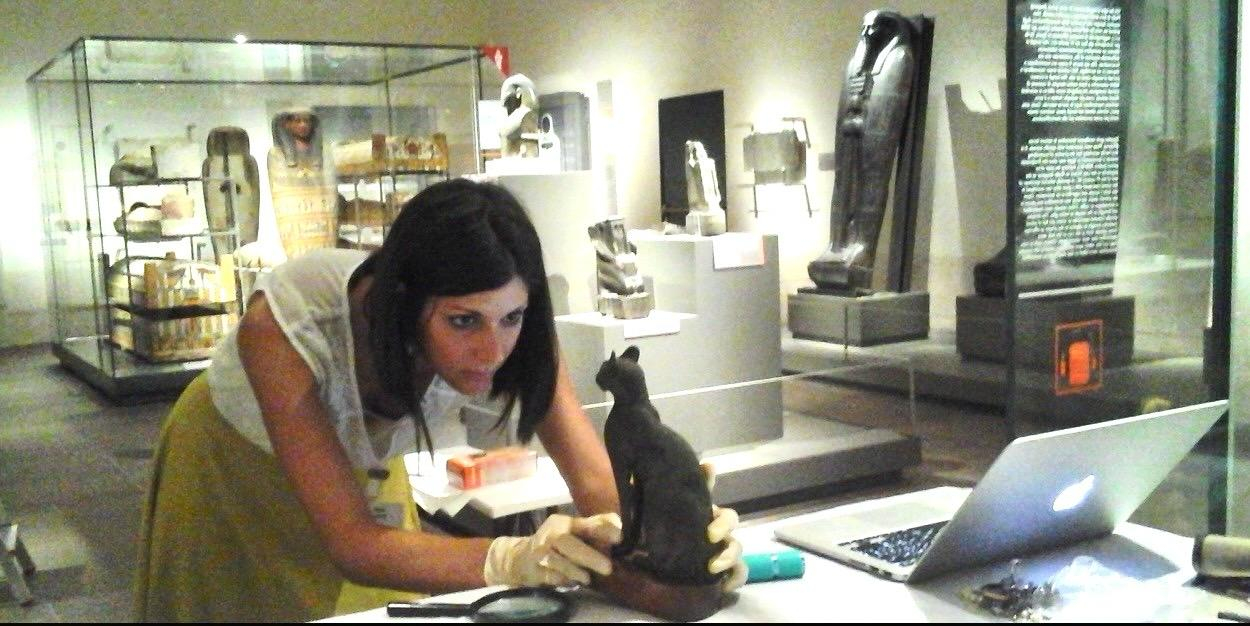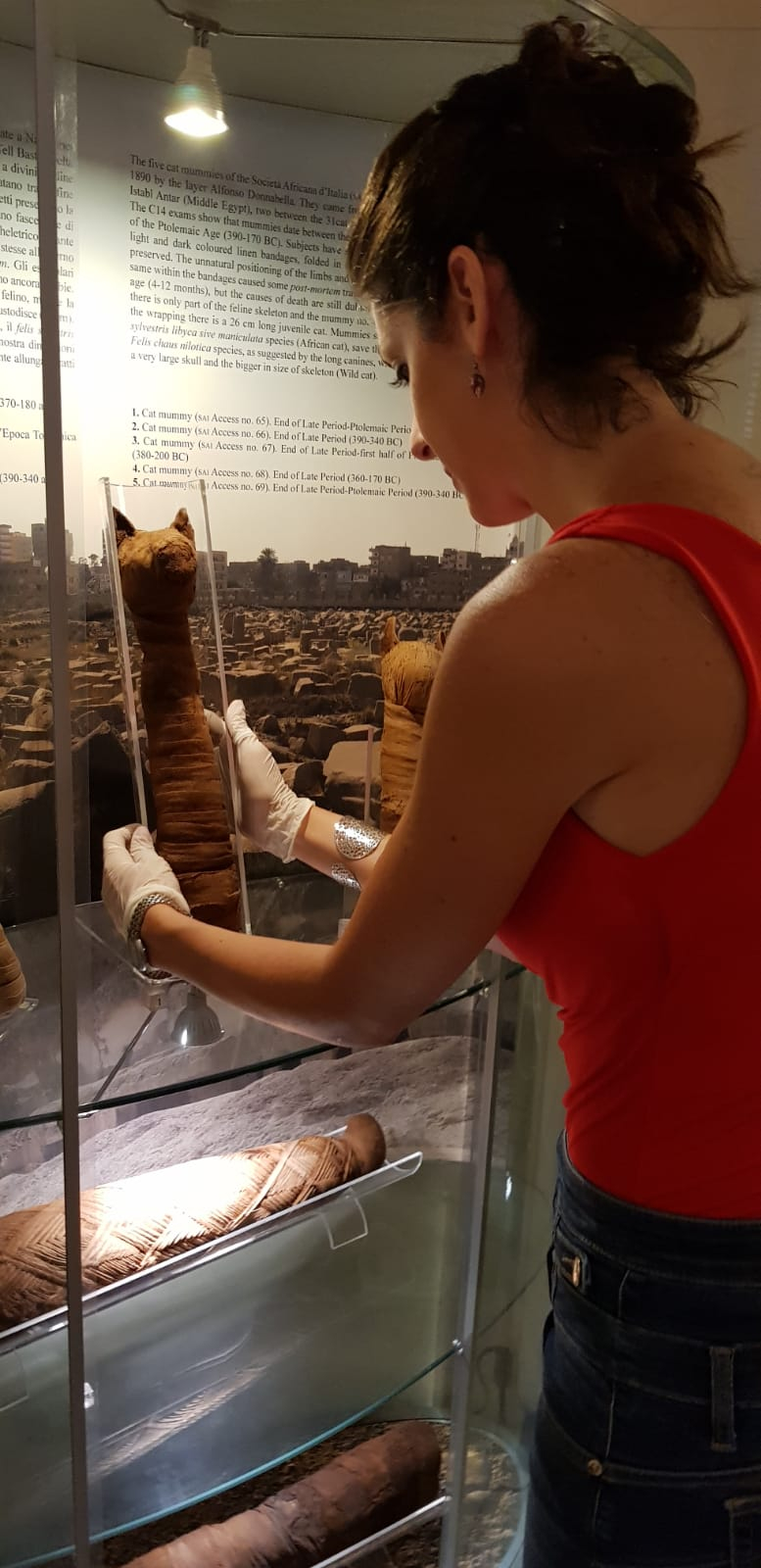Postdoc Fellow Maria Diletta Pubblico studies intricacies of votive animal mummies
 Animal mummies have long been neglected by scholars, even though they make up one of the largest categories of artifacts from ancient Egypt. But Maria Diletta Pubblico thinks there is valuable information held in studying techniques and materials used to wrap these artifacts. Currently at UCLA, Diletta is the recipient of a Marie Skłodowska-Curie Global Postdoctoral Fellowship (2023-2026), a highly competitive grant promoted by the European Commission.
Animal mummies have long been neglected by scholars, even though they make up one of the largest categories of artifacts from ancient Egypt. But Maria Diletta Pubblico thinks there is valuable information held in studying techniques and materials used to wrap these artifacts. Currently at UCLA, Diletta is the recipient of a Marie Skłodowska-Curie Global Postdoctoral Fellowship (2023-2026), a highly competitive grant promoted by the European Commission.
Her project, entitled SEAMS - a Study of Egyptian Animal Mummy Styles, is based at the Museo Egizio in Turin and the UCLA Cotsen Institute of Archeology (CIoA). Diletta foresees Secondment Periods at the Digital Heritage Innovation Lab, Instituto di Science de Patrimonio Cultural, Consiglio Nazionale delle Ricerche; the Department of Archaeology and Ancient History, Lund University; and the Centre for Textile Research, University of Copenhagen. She started her research at the CIoA on December 1st, under the supervision of Willeke Wendrich, director emeritus of the Institute. Her study aims to investigate the wrapping weaves of votive animal mummies, a religious phenomenon that was widely spread throughout Egypt between 1069 BCE and 380 CE ca.
Some animals (such as cats, dogs, hawks, ibises, crocodiles, snakes, fishes, shrews, etc.) were perceived to be the avatars of specific deities and deliberately killed in order to be sold as mummies to worshippers. They animals acted as intermediaries through which believers might easily address their concerns to the gods, according to Diletta.
After being donated to the corresponding gods as votive offerings, many thousands of mummies were buried in sacred necropolises throughout Egypt, she added. During the 19th and 20th centuries, these sites were subjected to large-scale illegal excavations with the aim of collecting and then shipping animal mummies to Europe, where they were used in paper and fertilizer industries and as souvenirs, she continued.
The incessant exploitation of animal mummies for a variety of purposes, as well as the unconventional and unrecorded removal of them from their burial places, caused an unavoidable loss of data. To shed light on the contextual data of votive animal mummies, Diletta will analyze the bandage weaves in order to demonstrate that they are markers of specific periods and regionalism.
“I want to detect differences in style that can show a different period or even a different workshop,” she said. She described her work as including examination of mummies held in museums in several countries in order to shed light on their manufacture through an “innovative multidisciplinary and interdisciplinary methodology that integrates traditional research approaches with new technologies. ”
The project will contribute to the advancement of this field “by reconstructing the original integrity of the wrapping patterns of specimens held in international museums through photogrammetry, MSI techniques, FORS, and virtual restoration,” according to Diletta. “The multi-scalar and cross analysis of the restored 3D replicas and their related data allows the recurring patterns to be identified and grouped into typologies,” she continued.
She received her PhD in Egyptology from the Università di Napoli L’Orientale in 2017 and has participated in several excavations in Italian and Egyptian archaeological sites such as Saqqara, Manqabad, Abu Ghurab, Cuma, Pompei, and Rome-Colosseum. Among her future goals, she hopes to work in museums to continue showing her newest findings and research techniques.
Published on February 29, 2024.



